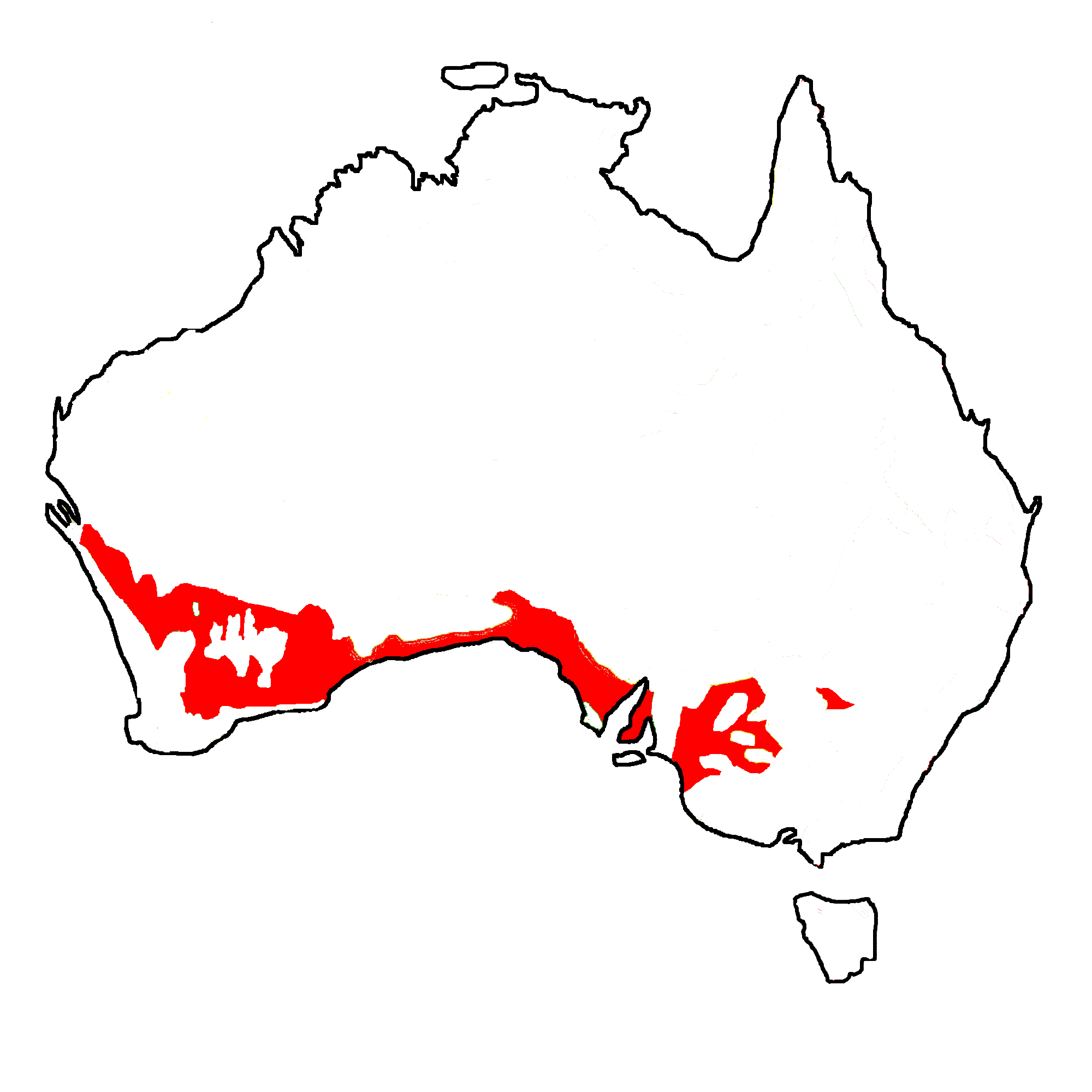Mallee Woodlands And Shrublands on:
[Wikipedia]
[Google]
[Amazon]
 Mallee Woodlands and Shrublands is one of 32 Major Vegetation Groups defined by the Australian Government
Mallee Woodlands and Shrublands is one of 32 Major Vegetation Groups defined by the Australian Government
 Mallee Woodlands and Shrublands is one of 32 Major Vegetation Groups defined by the Australian Government
Mallee Woodlands and Shrublands is one of 32 Major Vegetation Groups defined by the Australian Government Department of the Environment and Energy
The Department of the Environment and Energy (DEE) was an Government of Australia, Australian government department in existence between 2016 and 2020.
The department was responsible for matters including environment protection and conservatio ...
and one of the 189 habitats in the HOTW habitats of the World classification.
Description
" Mallee" refers to the growth habit of a group of (mainly)eucalypt
Eucalypt is any woody plant with Capsule (fruit), capsule fruiting bodies belonging to one of seven closely related genera (of the tribe Eucalypteae) found across Australia:
''Eucalyptus'', ''Corymbia'', ''Angophora'', ''Stockwellia'', ''Allosyn ...
species that grow to a height of , have many stems arising from a lignotuber and have a leafy canopy that shades 30–70% of the ground. The term is also applied to a vegetation association where these mallee eucalypts grow, on land that is generally flat without hills or tall trees and where the climate is semi-arid
A semi-arid climate, semi-desert climate, or steppe climate is a aridity, dry climate sub-type. It is located on regions that receive precipitation below Evapotranspiration#Potential evapotranspiration, potential evapotranspiration, but not as l ...
.
Of the 32 Major Vegetation Groups classified under the National Vegetation Information System, "Mallee Woodlands and Shrublands" (MVG14):
* are semi-arid
A semi-arid climate, semi-desert climate, or steppe climate is a aridity, dry climate sub-type. It is located on regions that receive precipitation below Evapotranspiration#Potential evapotranspiration, potential evapotranspiration, but not as l ...
areas dominated by mallee eucalypts;
* may also have co-dominant species of '' Callitris'', ''Melaleuca
''Melaleuca'' () is a genus of nearly 300 species of plants in the myrtle family, Myrtaceae, commonly known as paperbarks, honey-myrtles, bottlebrushes or tea-trees (although the last name is also applied to species of '' Leptospermum''). They ...
'', ''Acacia
''Acacia'', commonly known as wattles or acacias, is a genus of about of shrubs and trees in the subfamily Mimosoideae of the pea family Fabaceae. Initially, it comprised a group of plant species native to Africa, South America, and Austral ...
'' and ''Hakea
''Hakea'' ( ) is a genus of about 150 species of flowering plants in the family ''Proteaceae'', endemic to Australia. They are shrubs or small trees with leaves that are sometimes flat, otherwise circular in cross section in which case they are s ...
'';
* have an open tree or shrub
A shrub or bush is a small to medium-sized perennial woody plant. Unlike herbaceous plants, shrubs have persistent woody stems above the ground. Shrubs can be either deciduous or evergreen. They are distinguished from trees by their multiple ...
layer with more than 10% foliage cover and more than 20% crown
A crown is a traditional form of head adornment, or hat, worn by monarchs as a symbol of their power and dignity. A crown is often, by extension, a symbol of the monarch's government or items endorsed by it. The word itself is used, parti ...
cover, distinguishing MVG 14 from "Mallee Open Woodland" (MVG14) and "Sparse Mallee Shrublands" (MVG32);
* have an understorey composition strongly influenced by rainfall, soil type and fire regime;
* are among the most fire prone of all plant communities in semi-arid and arid zones.
The major vegetation subgroups of MVG14, based mainly on the perennial
In horticulture, the term perennial ('' per-'' + '' -ennial'', "through the year") is used to differentiate a plant from shorter-lived annuals and biennials. It has thus been defined as a plant that lives more than 2 years. The term is also ...
components of the understorey are:
* mallee with hummock grass ('' Triodia scariosa'' and '' Triodia irritans'');
* mallee with a dense, shrubby understorey;
* mallee with an open shrubby understorey;
* mallee with a tussock grass ('' Themeda'', ''Poa
''Poa'' is a genus of about 570 species of Poaceae, grasses, native to the temperate regions of both hemispheres. Common names include meadow-grass (mainly in Europe and Asia), bluegrass (mainly in North America), tussock (some New Zealand spe ...
'' and '' Astrebla'' species) understorey.
Mallee woodlands and shrublands occur in 39 IBRA
The Interim Biogeographic Regionalisation for Australia (IBRA) is a biogeography, biogeographic regionalisation of Australia developed by the Australian government's Department of Sustainability, Environment, Water, Population and Communities ( ...
biogeographic regions.
Changes since European settlement
The present extent of this vegetation group is estimated to be about but the estimate prior to 1750 is . In 2001, the area covered by this vegetation group is estimated to be 65% of its pre-1750 coverage. The most extensive area of this vegetation association in Australia today is found in theGreat Victoria Desert
The Great Victoria Desert is a sparsely populated desert ecoregion and Interim Biogeographic Regionalisation for Australia, interim Australian bioregion in Western Australia and South Australia.
History
In 1875, British-born Australian explore ...
. Prior to 1750, the largest area is estimated to have occurred in the Murray-Darling basin.
About 33% of the clearing of this vegetation type is estimated to have accounted for 10% of the total area of land clearing in Australia. In South Australia, clearing of the mallee started in the late 19th century, following the introduction of the stump-jump plough in 1876.
References
{{Reflist Mediterranean forests, woodlands, and scrub in Australia Biogeography of New South Wales Biogeography of South Australia Biogeography of Victoria (state) Biogeography of Western Australia Sclerophyll forests